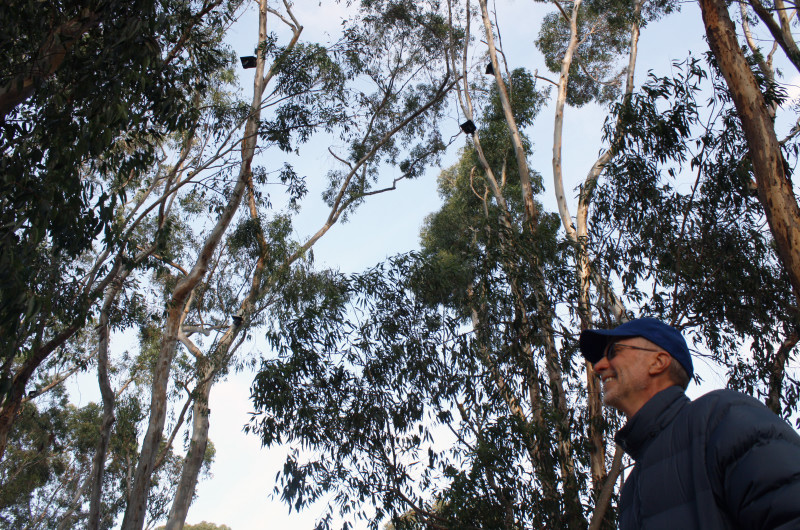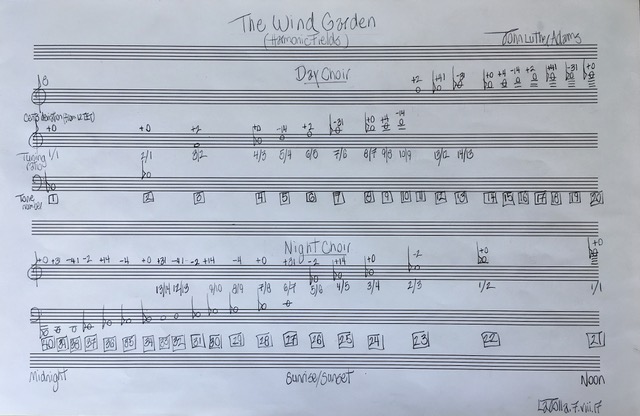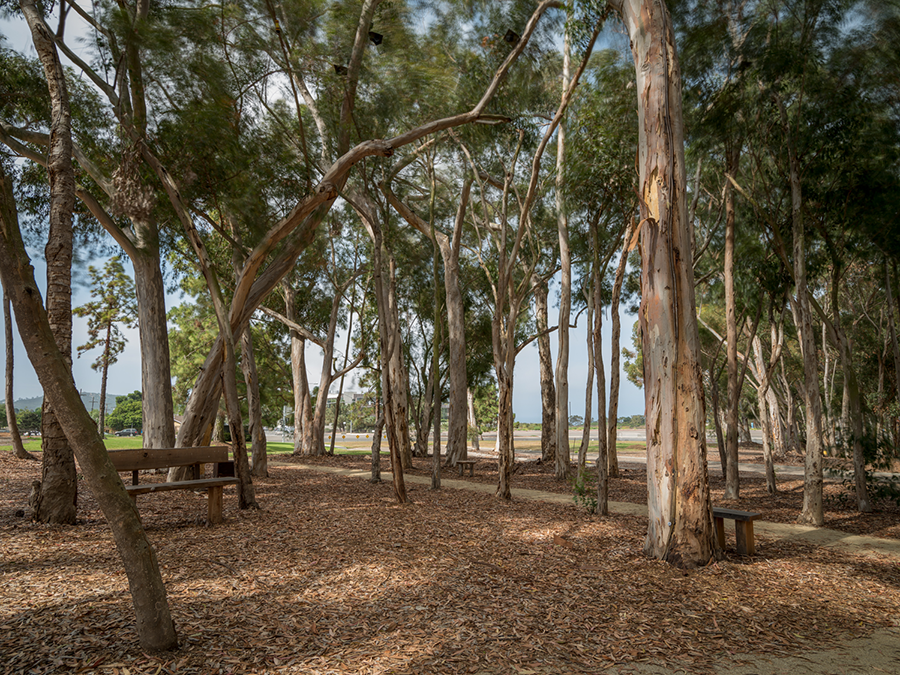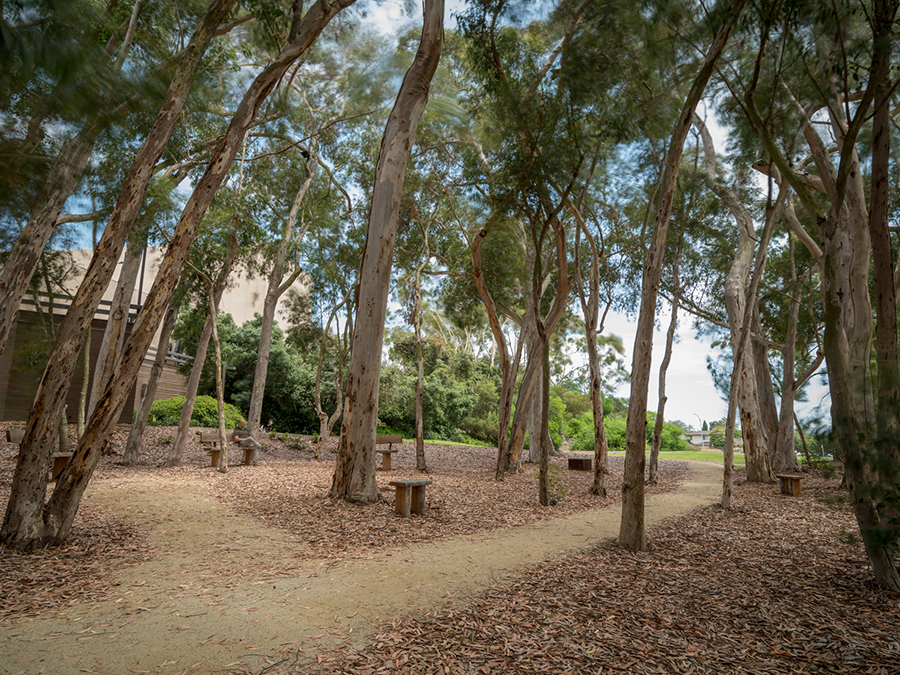John Luther Adams
The Wind Garden (2017)
Location: Near Mandell Weiss Theater, Theater District
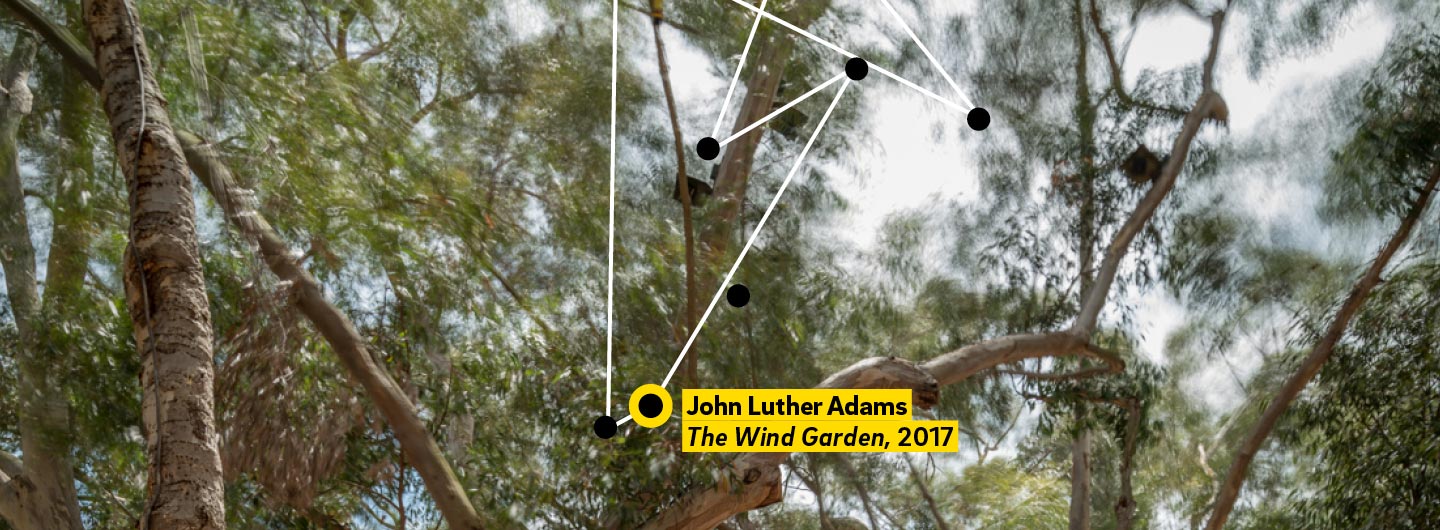
John Luther Adams is a composer whose life and work are deeply rooted in the natural world. The New Yorker’s Alex Ross calls him, “one of the most original musical thinkers of the new century.” Adams studied composition with James Tenney at the California Institute of the Arts. In the mid-1970s he became active in the campaign for the Alaska National Interest Lands Conservation Act, and subsequently served as executive director of the Northern Alaska Environmental Center.
For the Stuart Collection at the UC San Diego, Adams created a musical composition with and within the signature landscape of the campus: the eucalyptus grove. Located in the UCSD Theater District, The Wind Garden invites us to listen more deeply to the music of this place.
There are no pre-recorded elements, no data streams or sounding elements transposed from other locations. Everything that occurs in The Wind Garden is driven by the wind and the light conditions on the site, in real time. This work never repeats itself. Even for people who experience it on a regular basis, each encounter with The Wind Garden is a unique experience of listening and discovery.
Entering along the central pathway, one becomes aware of a soft atmosphere of sound wafting through the grove. The sounds are vaguely reminiscent of bells, voices and strings. But the movement of the trees, leaves and air in the grove makes it difficult to say exactly where they emanate.
In midday the sounds are high and bright. At night they are lower and darker. On overcast days all the sounds are more subdued. And the sounds of summer are generally brighter than the sounds of winter. Throughout the day and throughout the year at every moment the sounds in the grove seem to rise and fall with the wind. Hidden in the trees are 32 small loudspeakers. Attached to the highest branches are 32 accelerometers that measure the movements of the trees in the wind. As the velocity of the wind changes so does the amplitude of the sound.
The musical foundation of The Wind Garden is two “choirs” of virtual voices – a “day choir” tuned to the natural harmonic series, and a “night choir” tuned to the sub-harmonic series. As darkness grows deeper, the sounds of the Night Choir fall in pitch and become darker. As daylight returns and darkness recedes, the sounds of the Night Choir rise and fade away. In early morning and again around sunset, both the Day Choir and Night Choir are equally present – producing especially rich harmonic colors. The rising and falling of these choirs traces the contours of the sun’s movement above, below and around the horizon over the course of the year.
Adams was awarded a Pulitzer Prize for Music and a Grammy Award for his symphonic work Become Ocean. Columbia University honored Adams with the William Schuman Award for Lifetime Achievement. A recipient of the Heinz Award for his contributions to raising environmental awareness, Adams was honored with the Nemmers Prize from Northwestern University “for melding the physical and musical worlds into a unique artistic vision that transcends stylistic boundaries.”
Adams has taught at Harvard University, the Oberlin Conservatory, Bennington College, and the University of Alaska. He has also served as composer in residence with the Anchorage Symphony, Anchorage Opera, Fairbanks Symphony, Arctic Chamber Orchestra, the Alaska Public Radio Network and UC San Diego. His music is recorded on Cantaloupe, Cold Blue, New World, Mode, and New Albion, and his books are published by Wesleyan University Press.
